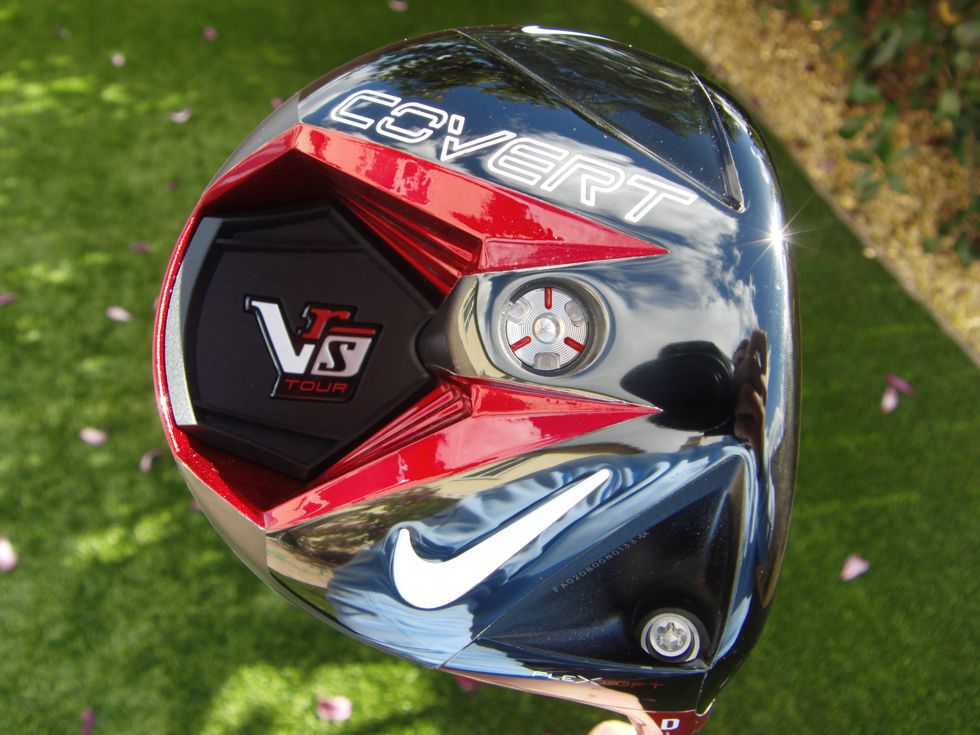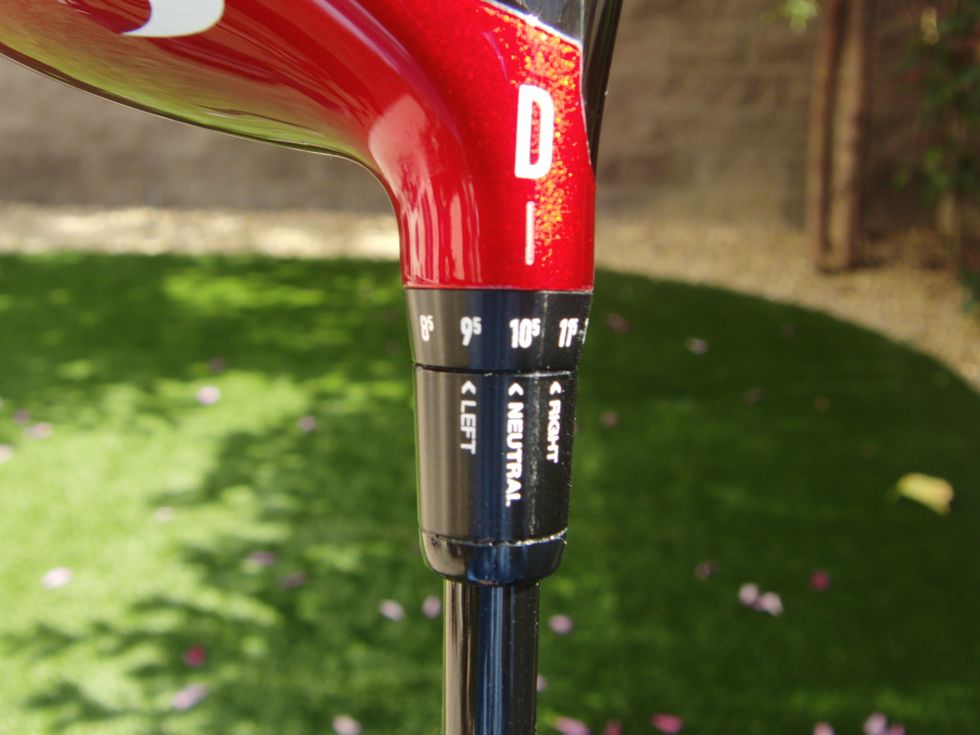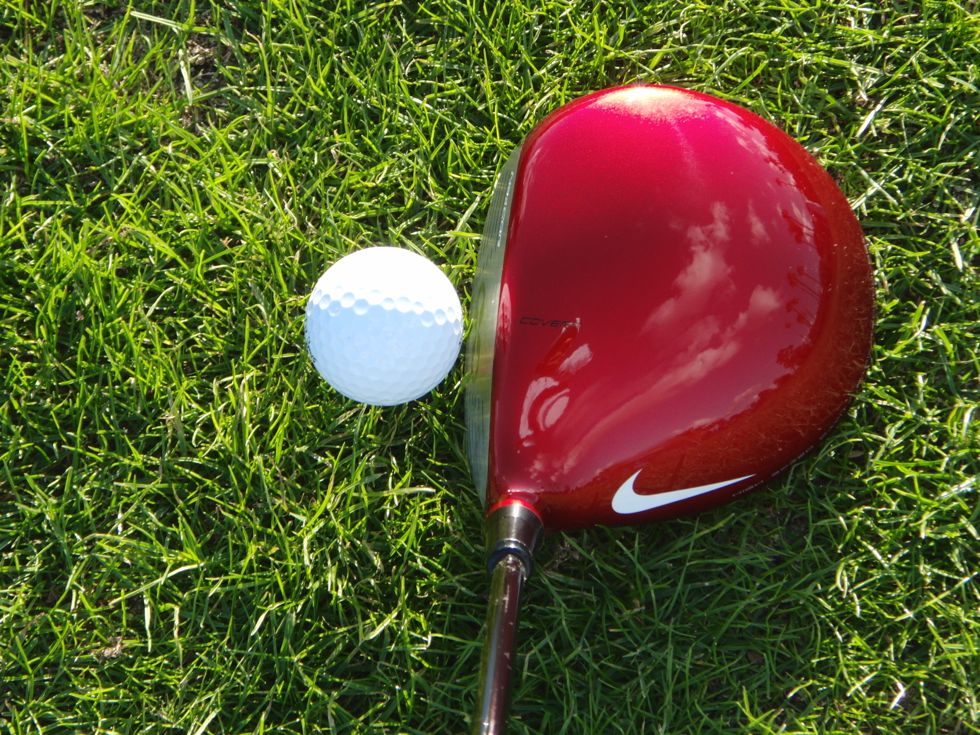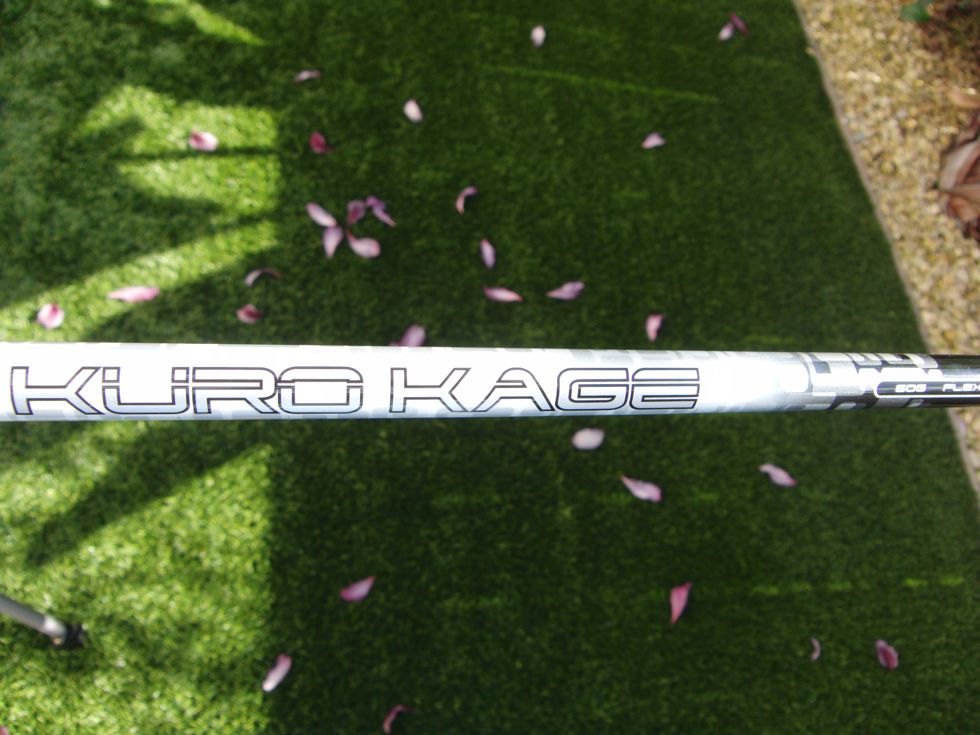It was the name of the game about five years ago, thanks to square drivers, perimeter weighting, and a USGA restriction on the industry’s previous CoR and clubhead inroads. MOI was capped eventually, but even before hitting the max the OEMs turned away en masse. We haven’t seen anything quite so boxy in a while, and objectives seem to have turned. Companies got sidetracked towards adjustable hosels, colorful crowns, and innovative aerodynamics.
But it’s back. Ever since Karsten Solheim designed the original Anser putter way back when, the golf industry has been trying to find new and creative ways to distribute weight to the edges of the clubhead. Not just with putters, but with cavityback irons and woods as well. Until now they had to resort to odd shapes (namely, squares or triangles) or heavier tungsten inserts.
Nike says the Covert, and its rear cavity, has changed the game. Let’s take a look.
Design and Technology
For the less technically-inclined, moment of inertia is a mechanical property that describes how the weight is distributed throughout the body of an object. Moment of inertia is to rotational dynamics what mass is to straight-line motion. F=ma becomes T=Iα, essentially. The higher the moment of inertia, measured in g*cm2, the more of the mass is found towards the edges of the object. In 2006, the USGA capped horizontal (heel-toe) MOI at 5900 g*cm2. One of the few OEM drivers to hit the limit was the Nike SQ Sumo2 5900, Nike’s second generation of square drivers.
Objects with a higher moment of inertia are more resistant to twisting, which is (in part) why tightrope walkers hold a long pole, or why someone trying to stand on one leg will extend their arms straight out. In golf, an increased MOI means that the clubhead won’t twist as much on an off-center hit. In theory this should lead to longer and more accurate mishits.
Nike calls the technology behind the Covert’s increased MOI the “High Speed Cavity Back,” and it has been concealed under the crown (which is where Nike says the name “Covert” comes from). This is somewhat a diversion from previous attempts to increase MOI in that it’s completely invisible at address. The square shapes of drivers from Nike and Callaway as well as the Hi-Bore design that Cleveland employed were both radical changes from the normal crown, but Nike has managed to avoid that.
Nike was among the first OEMs to integrate an adjustable hosel into their woods, and they’ve been steadily improving the technology. This year they have come up with what is probably the most important innovation since inception of adjustable hosels themselves: FlexLoft. Using what they call “Dual Axis” adjustment, Nike has built substantially on their old designs. The hosel has two adjustable sheaths, both unbelievably simple. The top one has three settings: Open, Neutral, and Closed, while the bottom sheath has five: 8.5˚, 9.5˚, 10.5˚, 11.5˚, and 12.5˚, giving you 15 different options. This is great because you don’t need to carry around a manual to memorize the difference between “A2,” “B5,” and dozen other settings. Pick which direction you want, and decide how high you want the ball to go. It’s that easy. In addition, this allows Nike to combat post-purchase buyer’s remorse because you can change the loft at any time.
Lastly, the clubface is made of what Nike is calling NexCOR, a variable face thickness technology designed to deliver the maximum ball speed possible across the entire face.
Esthetics
In recent years, Nike has not been shy about giving their clubs a unique look, from the old silver PowerBow weighting to the innovative shapes. This year they’ve managed to hide the technology, but they have made an esthetic choice that is sure to be polarizing. The crown of the clubhead on both the Covert and Covert Tour is a vibrant red, with a microscopic speckling and a Swoosh logo near the hosel. Both Covert models are fairly simple at address despite the color, and have a tiny black “Covert” script for use as an alignment aid.
I wasn’t sure how I would adapt to the look of the Covert, but I can certainly report that it’s not a determinant to my feelings about the club. The “Covert” alignment aid is a nice touch, and the red color tends to fade away. It became “normal” within just a few shots. Even the Nike logo was gone from my sight after a short time, though I can see how it could be more of a sticking point for some people. When I do happen to look at it, the Swoosh screams at my brain. “Swing From The Inside!” and “Turn That Face Over!” it yells, I feel like I’m going to become Kenny Perry. I didn’t have a problem with hooking either Covert, but the placement of the logo made it seem like I was going to.
I have had a problem with many of the recent drivers from the companies that have made drivers with non-black crowns. The TaylorMades in particular just do not look right to me. Maybe it’s the white color itself or the matte finish they have been using lately (my current best guess), but for some reason the “titanium balloon on a stick” look of those clubs is turned to 11. It’s a mental block, clearly, but one I just cannot get past.
I got none of that with the Coverts, both of which look like as traditional as a 430-460cc clubhead can. Even the red color did not bother me as much as the increasingly popular white crowns seem to. I still prefer black, but the red isn’t even close to as off-putting as I thought it might be.
The soles of the club are certainly busy, but that’s not something I’ve ever had a problem with. Fitting with the name and design of the Coverts, the lines on the sole are sharp and angular, and the color combination of red, black, and silver makes sense. The black accents of the Tour edition looks substantially better than the silver accenting on the normal Covert, but both clubs place high in the looks department. The black pattern on the Covert Tour continues onto the face, which I highly prefer to the silver face of the Covert. The grooves on the heel and toe of the face are painted red and fade nicely into the background, while the two white grooves on the bottom are great for lining up. The middle of each clubface has the logo that Nike has been using since the inception of their adjustable hosels (it looks like the infinity symbol). At the very least it provides a reference for finding out where you struck a shot on the face, at worst it’s a nuisance that isn’t visible from address.
Performance
When you hit the two Covert drivers side by side, you realize there’s an odd dichotomy. The Tour makes a distinctive “ping” sound, while the regular Covert produces more of a “thwack.” This is the opposite of what we usually see; tour drivers tend to be more muted, because better players generally to want a driver that’s a bit more quiet.
Those sounds translate to the way the clubs feel as well, as sound is wont to do. The Tour version has a bit more of a “pop” feel, while the regular Covert feels a bit more solid.
Both drivers rank highly in the distance department. Neither Nike nor I is going to promise you a dozen extra yards, but I did pick up a few over my five-year-old TaylorMade r7 SuperQuad due to a slightly better fit. My swing speed was a touch higher with the lighter shafts and heads, and my spin rate dropped substantially with the Tour (I’ve always spun the SuperQuad too much). Once I got a few swing issues suited out, both drivers did launch plenty high.
Now that that’s sorted out, let’s get to how the giant chunk they’ve taken out of the back of the driver works out. In short: it’s great. I’ve never had a huge problem with mishits on my driver, but each Covert provided more gear effect than nearly anything I’ve ever hit. Sure, if you lay the clubhead open or shut it down (relative to the path), it will curve just like any other driver. But hit one off the toe and you are much more likely to still be in the fairway, with a respectable distance to boot. It’s a great feature, especially now that Nike has found a way to hide it away.
It sort of makes you wonder why other drivers have to be any different.
The FlexLoft hosel left me with the same feeling of satisfaction. Just to make sure, I had someone change the settings and hand me the driver, while I was already in my setup position. I gave it a few waggles and made the swing, to avoid negating the changes though my grip. Did every little setting drastically change the ballflight? Of course not. But there was a noticeable difference between the “Open” and “Closed” settings, just as I could tell the launch differences between 8.5˚ and 12.5˚.
What this system also lets you do, conceivably, is have a few shafts to swap in and out based on course conditions or your current swing. Or, and this is probably the best path, you could find the shaft that fits you best, pick the club face and loft that work best, and forget about it.
Specs
Each Covert comes in just one loft: All of them. The Tour comes with a Mitsubishi Rayon Kuro Kage Silver shaft, available in regular, stiff, and x-stiff, while the regular Covert’s Kuro Kage Black shaft comes in womens’, senior, regular, stiff, and x-stiff. The Tour version is slightly more heavy; for the stiff shafts I received, the Covert was 59 grams, while the Tour was 66 grams. Both heads weigh in at 203.5 grams though, so the weight difference was not readily apparent.
Custom options are available, of course.
The stock shafts both felt oddly whippy to me. It’s possible that I’m closer x-stiff than I once was, but in testing these against other shafts, both Coverts were noticeably more whippy. I’m sure some people will like that, but I’m not one of them.
I remain unimpressed with Nike’s stock grip offerings. These ones, a Nike-branded Golf Pride Tour Velvet variant, are slick, not very tacky, and don’t handle sweat well, so I made sure to swap them out. That’s not a particularly big deal; I prefer a midsize grip anyway.
The headcovers are relatively nondescript. Not anything special (I had gotten a bit spoiled by the magnetic enclosure on my SuperQuad’s headcover), but nothing that should come into the buying decision. The lower half is a sock, while the upper is black, red, and white. It looks cool, though an easy-off latch or something would be a nice touch.
Conclusion
When we contacted Nike about doing a review of the Covert drivers, Nike was kind enough to send me both, and asked that one be sent back upon completion of the review. That means I, like most consumers out there, have a choice to make between what really aren’t terribly different drivers.
Why aren’t they that different? Because, like most drivers on the market, with the right shaft adjusted for their launch conditions, anyone will hit them the same distance. They are both long off the tee, on par with anything else out there. They also both hit the ball reasonably high, with moderately low amounts of spin.
The performance differences are subtle, and align right along with what you would expect. The regular Covert is certainly more forgiving on off-center hits, in terms of distance and gear effect. The Tour launches a bit lower and spins a touch less. Because I generally launch the ball too high and spin the ball a smidgen too much, that gave me a more distance.
But the real dichotomy between the two Covert drivers, as well as what differentiates them from other drivers on the market, is superficial. The red crown is something you’re going to have to weigh against white or black offerings from the rest of the industry. The Tour certainly looks better, with its black accents and smaller size, but that size is something you will have to measure against the way it affects the performance. The sound and feel differences between the two Coverts was, amazingly, the most important disparity I found.
I like both drivers more than I thought I would. The look of the Tour is simply sinister, and I love the way it launches. It has kicked the SuperQuad from my bag, though I never really got over how awesome the regular Covert felt. Every single shot just felt like a rocket off the face, and it did wonders for my confidence, which is something I think the vast majority of people will find very, very appealing.










Very nice review Jamo. Pretty much hit everything I thought about the Covert, which is now in my bag. The stock Kuro Kage shaft in the tour was “whippier” compared to my 910D2 Kai’li shaft, both of which are stiff shafts, but I think the slight extra flex in the Kuro Kage is giving me the extra distance.
My mishits tend to by towards the heel, but it’s still giving me good distance, albeit to the right. The black face on the tour definitely looks a lot more sinister and I think a lot of people will like having that same black face on the 460 head.
Both the grip and the headcover to me were both lackluster, but I always change the grips with new clubs anyway and also think a magnetic closure for the headcover like the Titleist 909 had would also be a good.
Again, great review, Jamo!
The fact that Nike decided to make the Tour version cooler looking kinda pisses me off. I was sold on purchasing this driver before it even came out, but I, like most golfers out there, probably have no business hitting a “tour” anything. So what does Nike go and do? They make the version that appeals to the small minority of players the cooler looking one… which only makes me think that next year’s regular version will also have the black face and sole of the Tour… just to give them something to sell. This probably seemed like good business to someone in their marketing dept, but I think that in doing, they’ve made me (and probably a number of other people) not want to buy the Covert, just to avoid buyers remorse when they come out with a black and red regular Covert next year.
Great review though!!
I didn’t buy the driver but did buy the fairway wood and a lot of your review on the driver transfers over to the Fairway Woods. I personally feel Nike hit a Homerun with their entire line of woods one this one. They are absolutely stellar in all aspects.
Thank you for your review as always.
Yup. I always wish that these companies would put a bit more effort into headcovers. Obviously I see why they would spend engineering time elsewhere, but a better headcover isn’t rocket science, nor should they be particularly expensive to manufacture. Hell, they could design one great headcover tomorrow and then just slap the new logo on for 2014, and 2015, and 2016, etc.
I really liked the 460 head vs the 430 Tour head when I tried these out earlier this year. Thought 460 had better feel, but also had higher spin for me. I also thought the cavity back driver would sit funny on the ground behind the ball, but it didn’t. As much as I liked the driver, the hybrid feels even better! Thanks for the review.
Great Review………..Im in love with my Covert Driver and 3 wood Non Tour Models.
I did a trackman driver fitting and my best numbers, which were basically the same, showed that the Covert and Hot X were best suited for me. As I’ve never been much of a Nike fan, their Slingshots were the last thing that caught my eye, I was somewhat taken aback that this was one of the finalists.
Although I chose the X, I am thinking about buying the Covert as its a bit more versatile than the X…ability to change lofts unlike X.
My only concern, which the author echo’s, is finding the right shaft for my swing, otherwise I think Nike has a winner with this driver
I just purchased this driver and though I have yet to receive it, I am super stoked and confident that it is going to do wonders for my driving. I took the time to hit different shafts on a trackman to see what gave me the best numbers and consistency so hopefully all that helps! Unfortunately, I have been waiting because I chose the KK silver shaft over the KK black/red shaft and it is on backorder until June 7th. Great review!
On a side note, I always wish the performance model came in black face and underbelly because it would just be such an outrageously beautiful club.
I got my Covert driver last May, so I have had plenty of time to dial it in…..currently at 12.5* Left. This gives me the flight path that is mid trajectory. I almost ordered it with a Project X shaft but, after hitting it on the LM along with my Powerbilt AFO with PX 5.0 shaft, I decided to go ahead and take the KuroKage regular shaft. It does have a lower launch than the Project X so that’s why I have it set at 12.5
I also have the Covert 3 wood.
Looking back, I am glad I made the purchase. I may not be longer than the Powerbilt, but I am much more accurate. This means more fairways and more chances to get a GIR.
Currently considering the Covert Tour 5 wood.